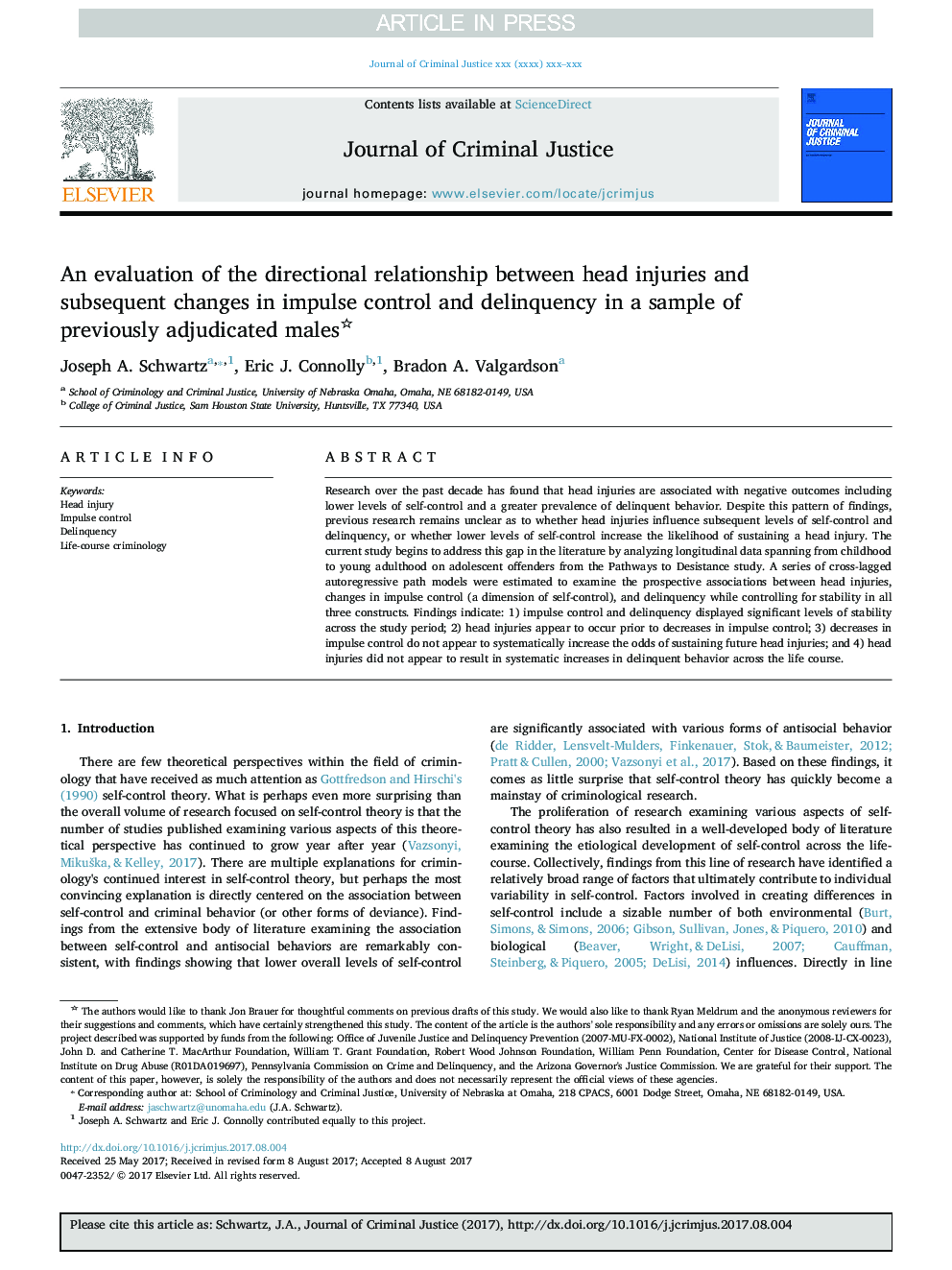| Article ID | Journal | Published Year | Pages | File Type |
|---|---|---|---|---|
| 7242164 | Journal of Criminal Justice | 2018 | 11 Pages |
Abstract
Research over the past decade has found that head injuries are associated with negative outcomes including lower levels of self-control and a greater prevalence of delinquent behavior. Despite this pattern of findings, previous research remains unclear as to whether head injuries influence subsequent levels of self-control and delinquency, or whether lower levels of self-control increase the likelihood of sustaining a head injury. The current study begins to address this gap in the literature by analyzing longitudinal data spanning from childhood to young adulthood on adolescent offenders from the Pathways to Desistance study. A series of cross-lagged autoregressive path models were estimated to examine the prospective associations between head injuries, changes in impulse control (a dimension of self-control), and delinquency while controlling for stability in all three constructs. Findings indicate: 1) impulse control and delinquency displayed significant levels of stability across the study period; 2) head injuries appear to occur prior to decreases in impulse control; 3) decreases in impulse control do not appear to systematically increase the odds of sustaining future head injuries; and 4) head injuries did not appear to result in systematic increases in delinquent behavior across the life course.
Related Topics
Social Sciences and Humanities
Psychology
Applied Psychology
Authors
Joseph A. Schwartz, Eric J. Connolly, Bradon A. Valgardson,
